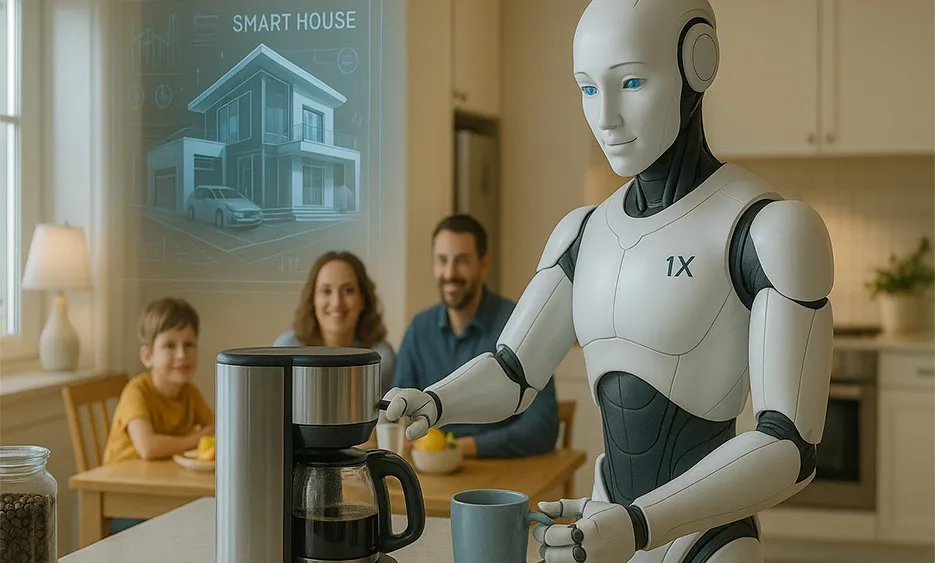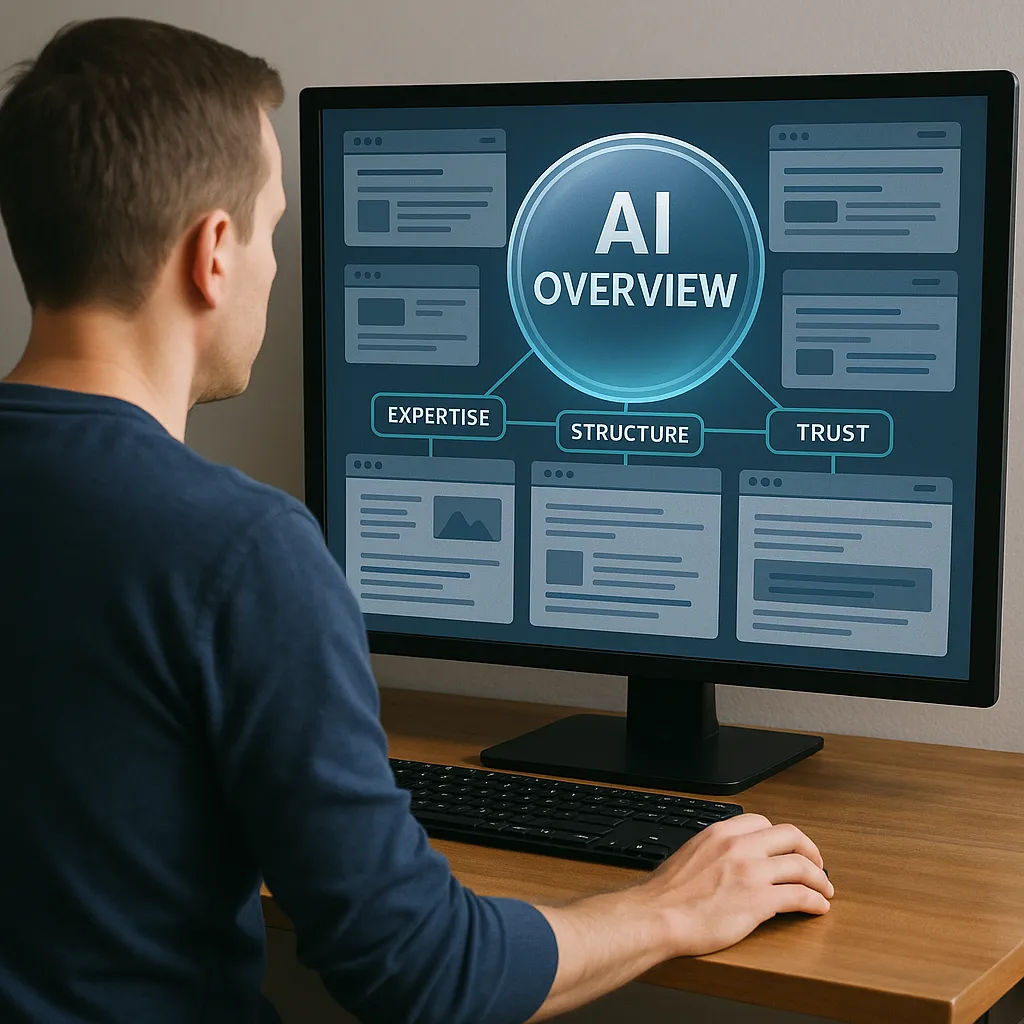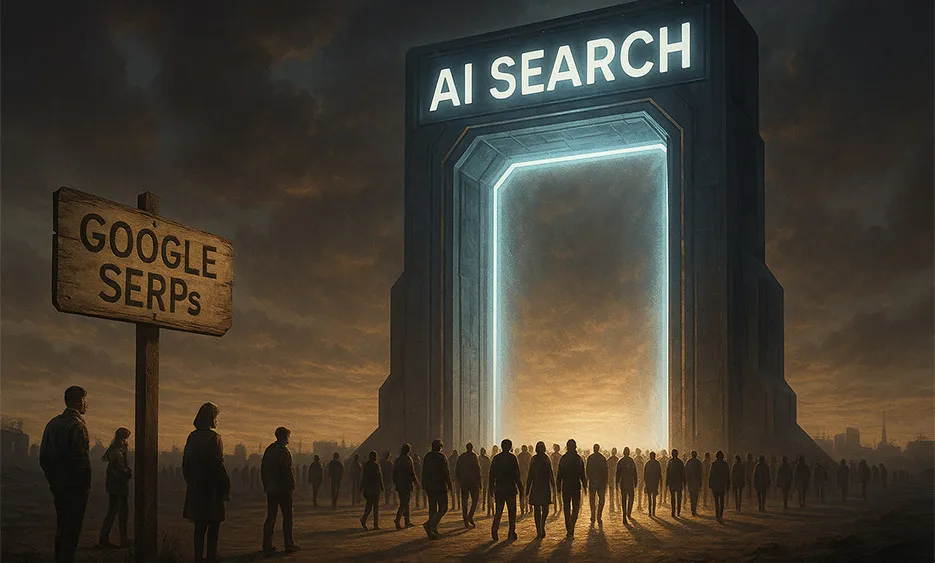
Humanoid household robots and their AI for everyday life
16. June 2025
Humanoid household robots are increasingly entering the everyday lives of many people due to rapid technological development. The Norwegian startup 1X, together with Redwood AI, is developing the innovative household robot NEO with comprehensive AI support.
This article shows how artificial intelligence enables the NEO brand robot to handle complex household tasks effectively, and explains the significance of the planned in-home tests for the entire robotics industry.
What is Redwood AI and how does it improve NEO's autonomy?
Redwood AI is an advanced AI model, developed and optimized specifically for the humanoid robot NEO. This very system is designed to help NEO independently perceive its environment, analyze it thoroughly, and respond accordingly.
How does embodied learning work at Redwood AI?
Unlike traditional robots that only follow fixed commands, NEO learns through so-called embodied learning. In this process, he continuously gains experience by physically interacting with his environment and constantly adapts his behavior. This enables NEO to handle tasks such as vacuuming, watering plants, and even carrying up to 20 kilograms.
Why is human oversight important?
Although Redwood AI NEO provides a high level of autonomy, humans can intervene at any time via remote control in unexpected situations. This hybrid control not only increases safety but also provides valuable training data from human actions. These very data help NEO to further develop and continuously improve his learning process in a targeted way.
What special features distinguish NEO Gamma for home use?
NEO Gamma is the robot version that 1X will be testing intensively in hundreds to thousands of households starting in 2025. The goal is to use the robot under real-life conditions and further develop its functions specifically for everyday use.
What distinguishes NEO Gamma from other humanoid robots?
The household robot was developed specifically for use in private households and adapts perfectly to this environment. Its soft knitted cover increases safety and reduces the risk of injury during daily use. In addition, the integrated full-body controller enables natural, human-like movement, which significantly increases its acceptance in the home environment.
What household tasks can NEO Gamma take on?
The robot is designed for a wide range of tasks, including:
- Make coffee
- Clean windows
- Wearing and folding laundry
- Vacuuming
- Watering plants
- Pick up and carry objects
Its human-like mobility allows it to bend down, sit on chairs, and walk naturally at the same time.
How does NEO learn to deal with new objects and environments?
NEO masters unfamiliar situations because it combines reinforcement learning with human motion data and learns from it. Through careful observation and imitation of human actions, it continuously acquires new skills. This allows NEO to adapt flexibly to different households and handle various objects with ease.
What challenges still lie ahead for 1X and NEO?
Despite major technological advances, there are still several hurdles on the path to market readiness:
- Technical reliability: Ensuring stable and error-free operation in complex everyday situations.
- Cost efficiency: Developing economical manufacturing processes to make the robot affordable.
- User-friendliness: Intuitive operation and integration into users’ daily lives.
- Social acceptance: Gaining consumer trust and demonstrating the added value.
The in-home tests play a central role in addressing these challenges and preparing the robot for the mass market.
Conclusion
Redwood AI is bringing the humanoid robot NEO noticeably closer to people’s everyday lives. With real learning, high adaptability, and human-like movement, NEO Gamma sets new standards for autonomous household assistance. And thanks to the ongoing in-home tests, its everyday usability is continuously improving while safety in use is also increasing.
The development of humanoid robots like NEO shows how AI technologies will influence our everyday lives in the near future. If you would like to learn more about such innovations and their potential, feel free to get in contact with us. As a full-service marketing agency, we provide insights into modern technologies and help you make the most of their opportunities.
Sources:
- https://www.perplexity.ai/discover/top/1x-s-humanoid-robot-steps-clos-c4LdATLPSi66tcxq_ZgndA
- https://www.therobotreport.com/1xs-neo-humanoid-gains-autonomy-with-new-redwood-ai-model/
- https://x.com/1x_tech/status/1932474830840082498
- https://www.1x.tech/discover/announcement-1x-unveils-neo-beta-a-humanoid-robot-for-the-home
- https://www.designboom.com/technology/humanoid-robot-neo-gamma-house-chores-home-owners-autonomous-assistant-02-26-2025/
- https://www.livescience.com/technology/robotics/jetsons-robot-finally-arrives-sweater-wearing-neo-gamma-android-helps-with-household-chores
- https://www.cnet.com/tech/services-and-software/ai-and-robots-that-do-your-household-chores-dream-on-folks/
- https://www.ecovacs.com/us/blog/home-robot-design
Our blog
Latest news
With our blog, you are always close to our work, our current projects and the latest trends and developments in web and print.
Any questions?





